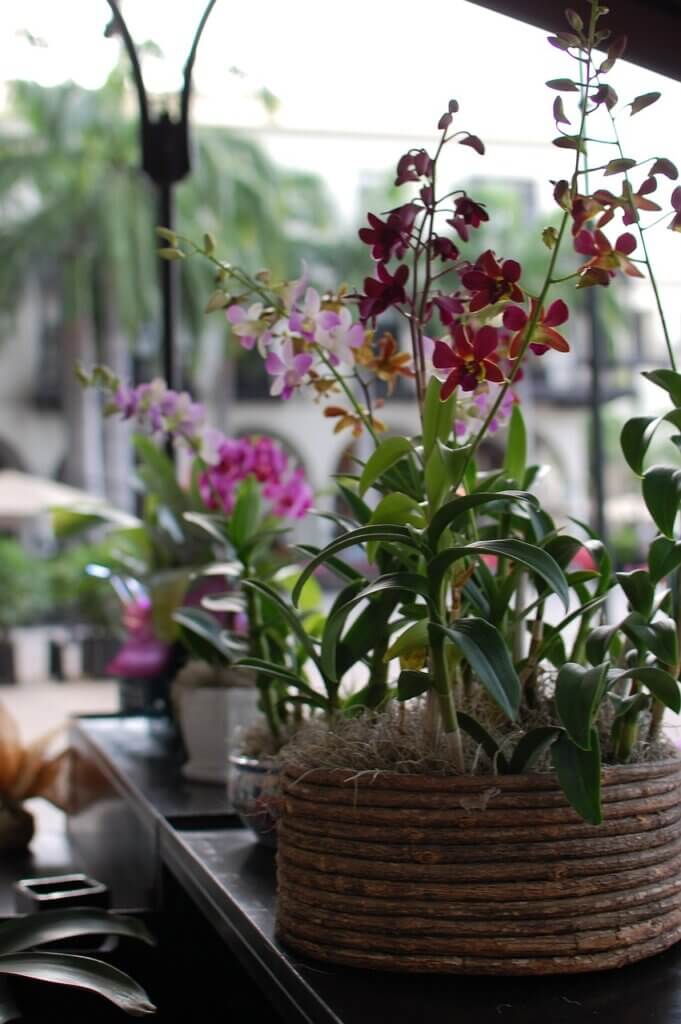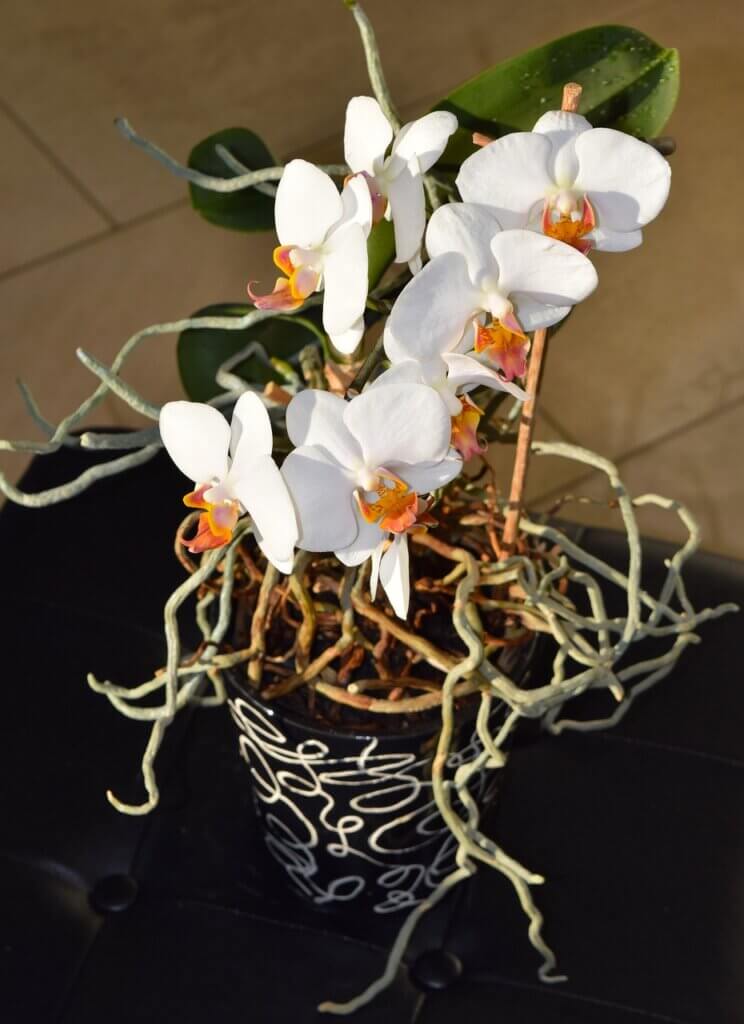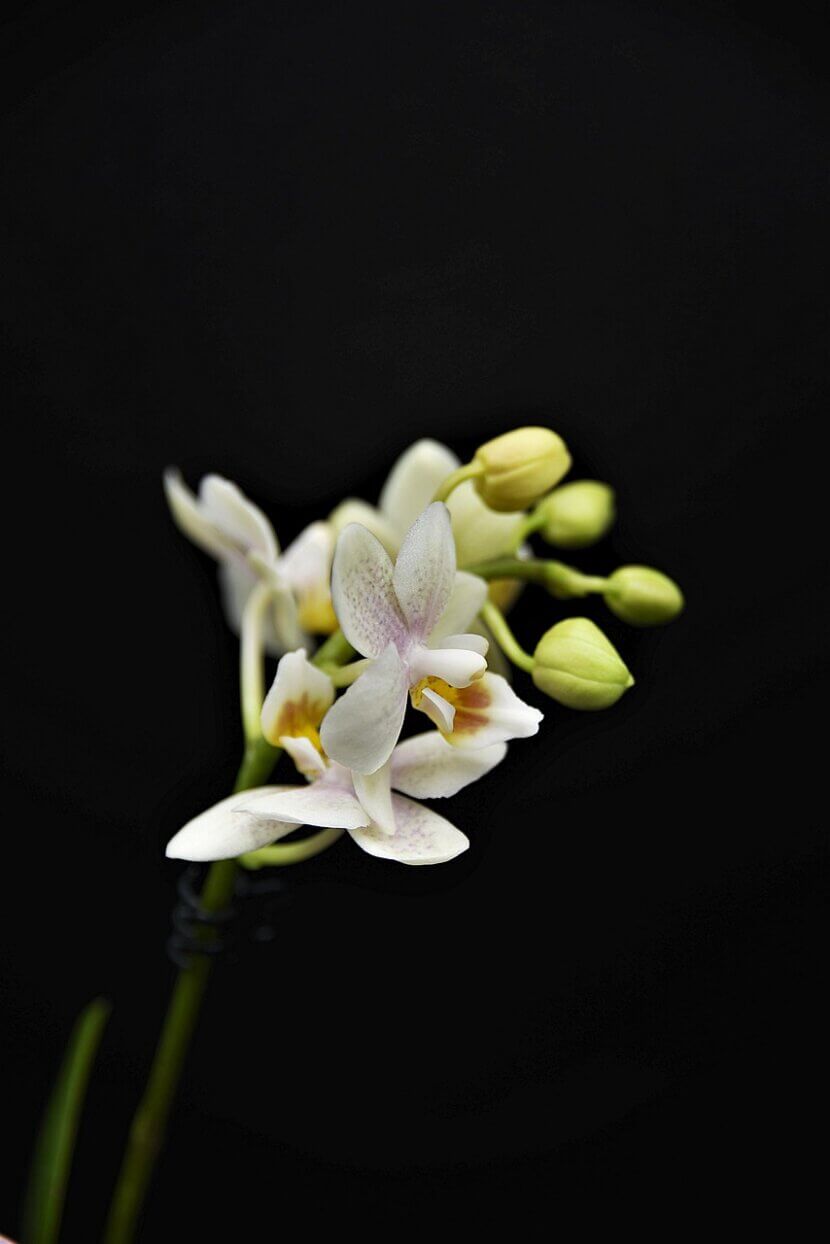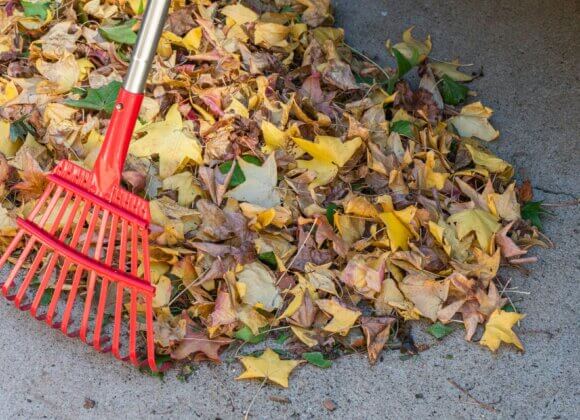With their graceful flowers, exotic shapes and colors as well as an exciting history, they are among the most popular houseplants in the world.
And hardly any other plant divides the minds of plant lovers as much as they do – for some they proliferate with lush flowers, for others they die one after the other.
So what do orchids want?
How do you nurture and care for them?
Which home remedies can act as a booster?
And who is the biggest orchid fan among celebrities?
Lots of questions – here are the answers.
Let’s start from the very beginning.
Orchids have a fascinating history dating back to ancient times.
The first documented mention comes from China more than 2500 years ago, where orchids were prized for their medicinal and aesthetic qualities.
In ancient Greece, they were regarded as a symbol of fertility and strength.
Incidentally, the name “orchid” itself is derived from the Greek word “orchis”, which means “testicle” – an allusion to the plant’s root-like bulbs.
In the 19th century, orchids flourished in Europe as explorers began to bring rare specimens from tropical regions to England and France.
These exotic plants became a status symbol for the rich and powerful, who were prepared to pay astronomical sums for rare orchid species.
Prominent orchid lovers
Over the years, many celebrities have developed a passion for orchids.
Queen Victoria of England was known for her extensive orchid collection, and former British Prime Minister Sir Winston Churchill was also an avid orchid lover.
In modern times, designer Karl Lagerfeld was among the prominent admirers, and actress Julia Roberts also has a soft spot for these elegant plants.
Variety of orchids: How many varieties are there?
There is plenty to choose from: it is estimated that there are 25,000 to 30,000 different orchid species worldwide, spread over around 880 genera. These plants can be found on almost every continent, from the tropics to the temperate climate zones. In addition, there are over 100,000 hybrids that have been developed by breeders to create new color variations, shapes and sizes.

Popular and robust orchid species
The Phalaenopsis, also known as the butterfly orchid, is one of the most popular and robust orchid species in this country.
It is ideal for beginners as it is relatively easy to care for and its flowers last for several weeks.
Other popular varieties are
– Cattleya: Known for its large, fragrant flowers that are often used in bouquets.
– Dendrobium: A genus of over 1,200 species that thrive in both tropical and cooler regions.
– OncidiumOften referred to as the “dancing lady” due to the shape of its flowers.
– Paphiopedilum: The Venus Shoe Orchid, prized for its unique flower shape.
The right care for orchids
Orchids are not as demanding as their exotic appearance might suggest.
But they do have a few specific needs:
– Light: Orchids prefer bright, indirect light.
Too much direct sunlight can burn the leaves, while too little light inhibits growth.
A spot near an east or west-facing window is ideal.
– WaterOrchids should be watered regularly but sparingly.
Allow the water to drain completely in a sink to avoid waterlogging, as this can lead to root rot.
As a rule, it is sufficient to water orchids once a week.
– Air humidity: Orchids love high humidity of around 50-70%.
If the air in your home is dry, you can spray the plant regularly or use a humidifier.
Home remedies for healthy orchids
In addition to basic care, a few tried and tested home remedies can help to keep your orchids healthy and blooming:
– Coffee grounds as fertilizer: Coffee grounds contain important nutrients such as nitrogen, potassium and magnesium.
Use it sparingly by sprinkling a teaspoon of dried coffee grounds around the roots of the orchid and watering well.
Once a month is sufficient.
– Banana peels for flowering orchids: Banana peels are rich in potassium, which promotes flower formation.
Cut the peels into small pieces, place them in water and water your orchids with the banana water every two weeks or so.
– Eggshells for calciumCrush eggshells into powder and sprinkle over the substrate, or use calcium water for watering to strengthen the roots.
– Cinnamon against fungal infestation: Cinnamon acts as a natural fungicide.
Dust the cut sites of your orchid with cinnamon powder after pruning.
– Garlic water for strengthening: Let a crushed clove of garlic steep in a liter of water for 24 hours and water your orchids with it once a month.
– Apple cider vinegar for healthy rootsAdd a teaspoon of apple cider vinegar to a liter of water and water once a month to strengthen the root system.
– Chamomile tea against pests: Prepare a weak chamomile tea solution, allow it to cool and spray the leaves and roots with it.
– Rainwater for watering: Use collected rainwater to water your orchids.
It is softer than tap water and is gentle on the plant.

What to do if the orchid loses all its flowers?
It is normal for orchids to lose their flowers after a flowering period.
However, this does not mean that the plant is dead.
To get the orchid to bloom again, you should:
– maintain proper care: Continue to water the plant regularly, but avoid overwatering the soil.
– be patient: Some orchids only bloom once a year, while others may bloom several times.
Pruning and care after flowering
After losing the flowers, you should cut the flower stalk about one centimeter above the node (the small thickening point on the stalk). This may encourage the plant to produce a new flower stalk. However, if the stem is brown and dry, cut it off completely.
Protection from summer heat
In summer, the heat can be a challenge for orchids.
Make sure that the plant is not exposed to direct sunlight and keep the humidity high.
A shady spot and regular spraying of the leaves will help to keep the plant cool.
With the right care, patience, home remedies and a good location, these exotic plants can give pleasure for a long time. Whether you are an experienced orchid lover or a beginner – there is always something new to discover and appreciate about these extraordinary plants.
Related posts:
So beautifully green – easy-care houseplants













